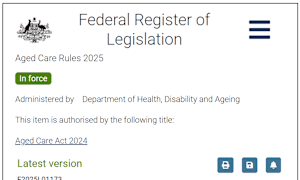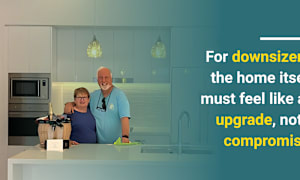Celebrating 12 months in the role, RLC Executive Director Daniel Gannon has produced a 56 page manifesto tailored for both federal and state governments on why retirement living communities can solve the housing crisis and save $1 billion a year in health costs.
Much needed
This is the data and document that the sector has badly needed to raise it from being positioned on the horizon to front and centre in policy discussion.
Titled ‘Better Housing for Better Health – the Care and Cost Effectiveness of Retirement Living’, Daniel explained to us that the document has a section for every state and federal politician, to support the RLC advocacy.
Two discussion anchors
The two key platforms are housing and wellness/health/care.
It says:
“Put simply, we are at a critical juncture. For a long time, the retirement living industry was traditionally focused on real estate, but has now transitioned to a sector that is providing care, wellbeing and support services. Indeed, it is providing better housing for better health.
They… have the potential to provide significant benefits for the care sector."
This is because living independently in a retirement community delays entry into taxpayer funded aged care, freeing up space in the system and delivering economic savings to government budgets.
Retirement living communities also have the potential to deliver better health outcomes for older Australians. This reduces interaction with the health system, releasing capacity back into the system for everyone.
There is significant socio-economic upside for state, territory and commonwealth governments through reduced interaction with the health system and delayed entry to aged care if more older Australians are living in more of these communities.
$1B+ savings pa
Some of the key findings from Better Housing for Better Health include:
National expenditure on aged care reduces by $945 million annually by delaying entry of ~11,600 people into residential aged care by two years.
Residents interact less frequently with healthcare systems, and are:
- 20% less likely to require hospitalisation after only nine months, and
- Avoid 14,000 annual hospitalisations.
The current pipeline of retirement communities will reduce the housing shortage by 18 per cent.
- Growing this pipeline to meet current demand levels could reduce Australia’s housing shortage by 67 per cent.
In addition, the report also reveals that residents in retirement communities are:
- 15% more physically active.
- 41% happier, and both physically and mentally healthier.
- Five times more socially active.
- Twice as likely to catch up with family or friends.
- Have reduced levels of depression and loneliness, saving governments almost $5 million in additional healthcare costs.
Policy objectives
The Retirement Living Council presents three objectives of the report:
Who is listening?

The RLC implemented a media blitz over the weekend, achieving significant press, social and TV coverage (See News Corp Australia press clippings).
Daniel Gannon had pre-organised high level meetings in Canberra yesterday with Treasurer Jim Chalmers, Housing Minister Julie Collins, Shadow Treasurer Angus Taylor and Shadow Housing Minister Michael Sukkar.
Positioning villages for care
Fundamental to the RLC advocacy is the statement: the retirement living sector ‘has now transitioned to a sector that is providing care, wellbeing and support services’.
With the average age and retirement village residents now being 81 and just 20% of the required new aged care beds actually being built each year, retirement villages in particular will become the preferred housing option for older Australians for the next 20 years.
The timing of this advocacy report couldn’t be better.
(The report is available to Retirement Living Council and Property Council members. Enquire: Property Council website).










